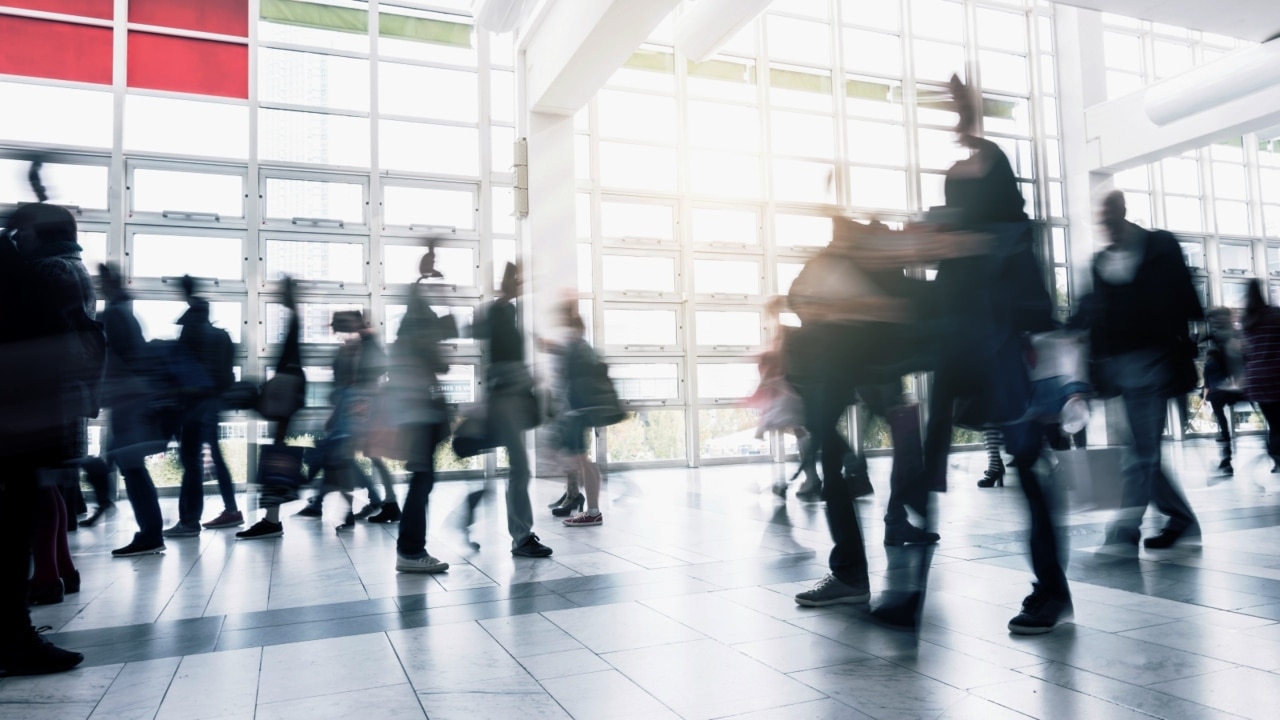Coronavirus: Job losses hit worst level in decades
As Queensland and national job losses hit levels not seen in decades, the Prime Minister has warned there will be further bad news in the months ahead.

QLD News
Don't miss out on the headlines from QLD News. Followed categories will be added to My News.
ONE in five Australian workers either lost their job or had their hours slashed in April, and more Queenslanders joined the unemployment line than in any month on record.
April unemployment figures released by the Australian Bureau of Statistics have revealed the harrowing toll of placing the economy into hibernation as 2.7 million Australians – or one in five workers – either lost their job or had their hours cut back.
Family loses all its breadwinners in one hit
Nearly 130,000 jobs were lost in Queensland in April, pushing up the unemployment rate
Why job loss figures are not what they seem
In Queensland, 129,500 jobs were stripped from the economy and 104,500 people left the workforce, pushing the unemployment rate up from 5.7 per cent in March to 6.8 per cent, the second highest in the country.
The job losses dwarf Queensland’s worst job plunge of the 1982 recession, when 11,400 jobs were shed in August that year.
And the Queensland figure even outstrips the previous worst national plunge of 74,900 jobs, in November 1992.
Nationally, job losses hit 594,300 in April pushing the unemployment rate to 6.1 per cent, up from 5.1 per cent.
Prime Minister Scott Morrison said it was a tough day, but Australians must brace for further hard news over the coming months, as the impending recession would be worse than the global financial crisis.
“This is harder,” Mr Morrison said.
“We haven’t seen this before and for young people who have never experienced that, this is beyond anything they could imagine.”
Treasurer Josh Frydenberg said the data was heartbreaking, and revealed the “real and painful” economic impact of the virus.
“This reiterates why our financial commitments to respond to the coronavirus were so important and are so important,” he said.
He said the $130 billion JobKeeper program, which is subsidising the wages of more than six million workers, had been key to keeping the unemployment rate well below market expectations of 8.2 per cent.
But he still expected unemployment would eventually reach Treasury’s estimate of 10 per cent.
ABS head of labour statistics Bjorn Jarvis said the massive exodus from the workforce had insulated the unemployment rate from an even bigger spike.
“The large drop in employment did not translate into a similar sized rise in the number of unemployed people because around 489,800 people left the labour force,” he said
The participation rate plummeted by an unprecedented 2.4 points to 63.5 per cent.
“This means there was a high number of people without a job who didn’t or couldn’t actively look for work or weren’t available for work,” Mr Jarvis said.
The figures showed 900,000 people employed in March did not have a job in April while a further 1.8 million people worked either fewer than their usual hours or no hours at all.
For those working fewer hours, 750,000 did no work at all while about one million did some work but fewer hours than usual.
Federal shadow treasurer Jim Chalmers said the unemployment rate would have been 9.6 per cent if the 500,000 Australians who dropped out of the labour market were counted.
“Underemployment surged from its pre-virus high to a new record with 1.8 million people looking for more hours than they can get,” he said.
“Australia entered the crisis from a position of relative economic weakness… which makes this much-needed support even more urgent.”
Queensland Treasurer Cameron Dick said the data was “very sobering, very sobering indeed”.
“The unemployment rate has increased in Queensland by 1.1 per cent, a very significant increase in line with the national increase… and other large states, particularly New South Wales,” he said.
Premier Annastacia Palaszczuk said every nation understood the enormity of the situation. Asked whether she felt partly responsible for job losses, in light of having to introduce tough COVID-19 restrictions, she said: “I think there’s not a leader in the nation that does not feel that.”
State shadow treasurer Tim Mander said the Government was too distracted by integrity scandals and factional infighting to protect Queensland jobs.
Federal Treasury has estimated 850,800 jobs would return to the economy once every state and territory reaches stage three of the economic road map out of the pandemic.
In Queensland, it’s estimated 51,452 jobs will return to the economy from midnight tonight as the state enacts stage one.
Originally published as Coronavirus: Job losses hit worst level in decades
